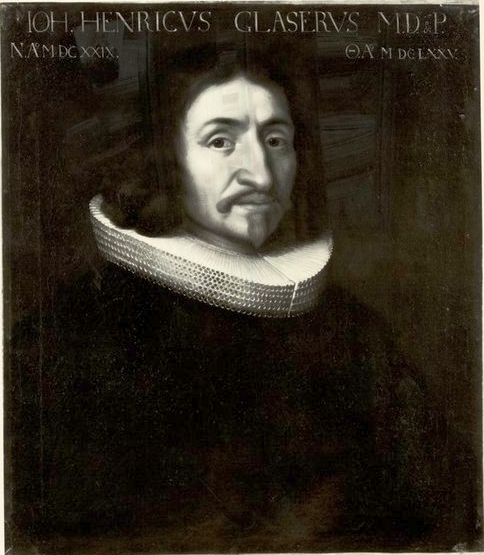|
1629 In Science
The year 1629 in science and technology involved some significant events. Botany * In London, John Parkinson publishes '. Chemistry * English alchemist Arthur Dee, court physician to Michael I of Russia, compiles ''Fasciculus Chemicus, Chymical Collections. Expressing the Ingress, Progress, and Egress, of the Secret Hermetick Science out of the choicest and most famous authors''. Medicine * Plague breaks out in Mantua and spreads to Milan. * In Toulouse, Niall Ó Glacáin publishes ''Tractatus de Peste''. Technology * In Rome, Giovanni Branca publishes '. Births * April 14 – Christiaan Huygens, Dutch mathematician and physicist (died 1695) * Laurent Cassegrain, French priest and physicist (died 1693) * Jan Commelijn, Dutch botanist (died 1692) * Christophe Glaser, Swiss pharmacian (died 1672) * Johann Glaser, Swiss anatomist (died 1675) * Agnes Block, Dutch horticulturalist (died 1704) Deaths * July 13 – Caspar Bartholin the Elder, Danish polymath, physician an ... [...More Info...] [...Related Items...] OR: [Wikipedia] [Google] [Baidu] |
Agnes Block
Agnes, or Agneta Block (29 October 1629, Emmerich am Rhein – 20 April 1704, Amsterdam) was a Dutch people, Dutch art collector and horticulturalist. She is most remembered as the compiler of an album of flower and insect paintings and as one of the first Europeans to successfully cultivate and fruit the pineapple outside of its native habitat. Life Agneta Block was the daughter of a successful Mennonite textile merchant. She first married Hans de Wolff (1613–1670), a silk merchant, in Amsterdam in 1649, and after he died, in 1674 she remarried in Amsterdam Sijbrand de Flines (1623–1697). In Amsterdam, she lived on the Herengracht close to Joost van den Vondel, who became a regular visitor at her house. Vondel had married Mayken de Wolff, who was the sister of Agnes's first husband's father. This elderly uncle ate at her house on Fridays, and is probably one of her greatest influences. Vijverhof After the death of her first husband, Agneta bought a country estate on the ... [...More Info...] [...Related Items...] OR: [Wikipedia] [Google] [Baidu] |
1675 In Science
The year 1675 in science and technology involved some significant events. Astronomy * March 4 – John Flamsteed appointed as "astronomical observator", in effect, the first Astronomer Royal of England. * August 10 – King Charles II of England places the foundation stone of the Royal Greenwich Observatory near London. * Giovanni Cassini discovers the Cassini Division in the rings of Saturn. Exploration * April – The Antarctic Convergence is first crossed by English merchant Anthony de la Roché, who lands on South Georgia. Mathematics * October 29 – German polymath Gottfried Leibniz makes the first use of the long s (∫) as a symbol of the integral in calculus. * November 11 – Leibniz uses infinitesimal calculus for the first time to find the area under the graph of the function ''y=f(x)''. Physiology and medicine * Antonie van Leeuwenhoek begins to use a microscope for observing human tissues and liquids. Technology * February 25 – Netherlands scientist Christi ... [...More Info...] [...Related Items...] OR: [Wikipedia] [Google] [Baidu] |
Johann Glaser
Johann Heinrich Glaser (6 October 1629 – 5 February 1675) was a Swiss anatomist. Known for his anatomical dissections on animals and humans, the Petrotympanic fissure, Glaserian fissure is named for him. Glaser was born in Basel, Switzerland where his father was a well-known painter and engraver. He studied locally and went to Geneva where he studied medicine. He then moved to Paris and became interested in botany at the Museum d'histoire naturelle, Museum d’Histoire Naturelle. In 1650 he wrote his dissertation ''De dolore colico.'' In 1661 he received a doctorate and because of his knowledge of Greek he was appointed professor at 1665 at the Faculté de Médecine, Basel. He moved to the chair of anatomy and botany in 1667. In his ''Tractatus de cerebro'' which was published posthumously in 1680 he described a fissure which is named after him as Fissura Glaseri. Glaser gave a funeral oration on the death of Hieronymus Bauhin (1637-1667), son of Gaspard Bauhin, Caspar Bauhin. Gl ... [...More Info...] [...Related Items...] OR: [Wikipedia] [Google] [Baidu] |


